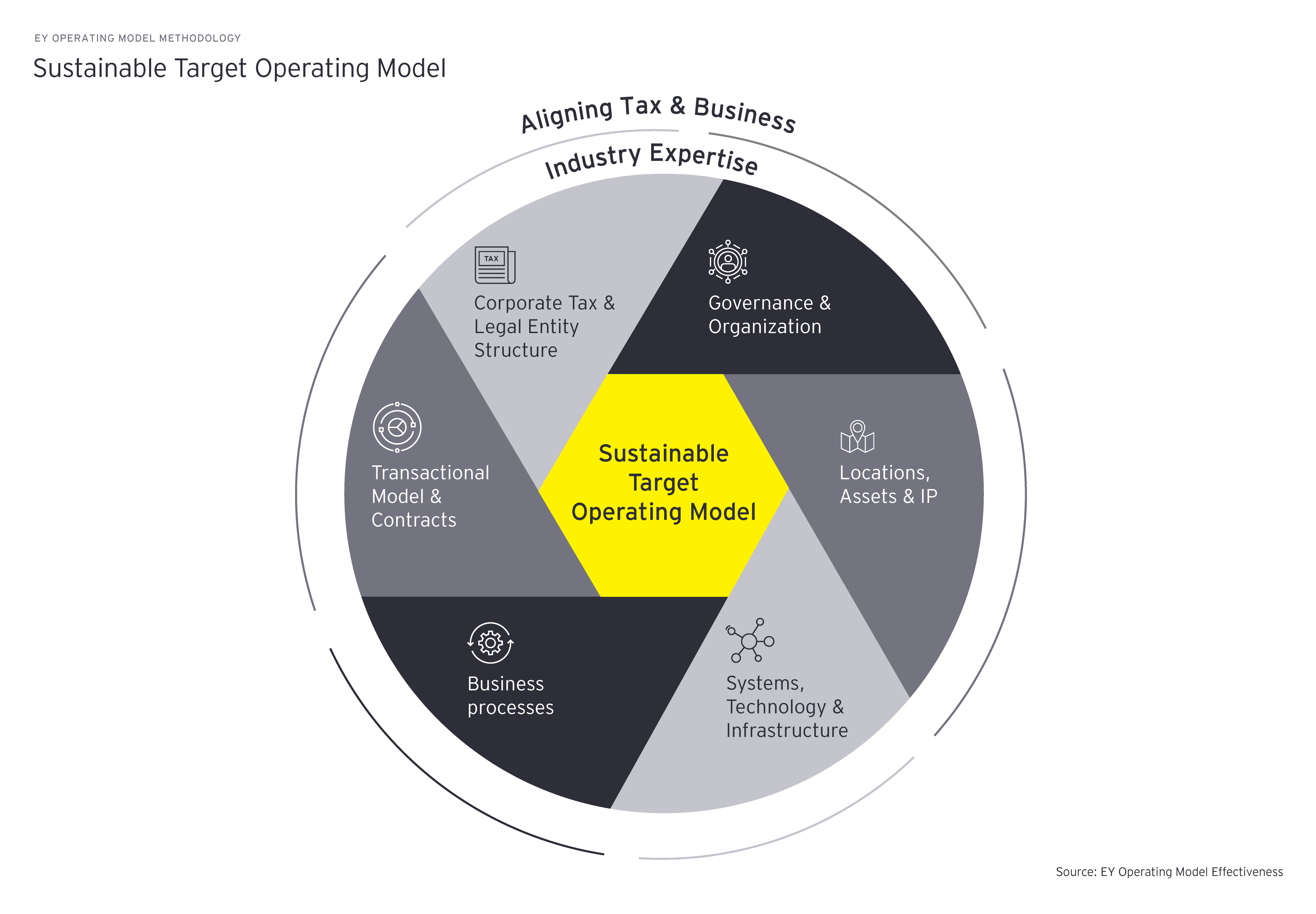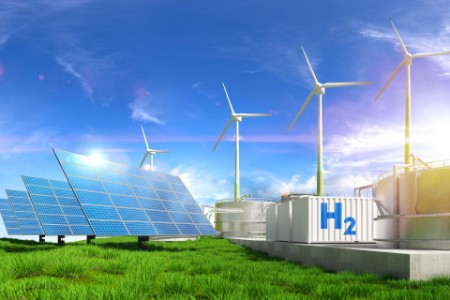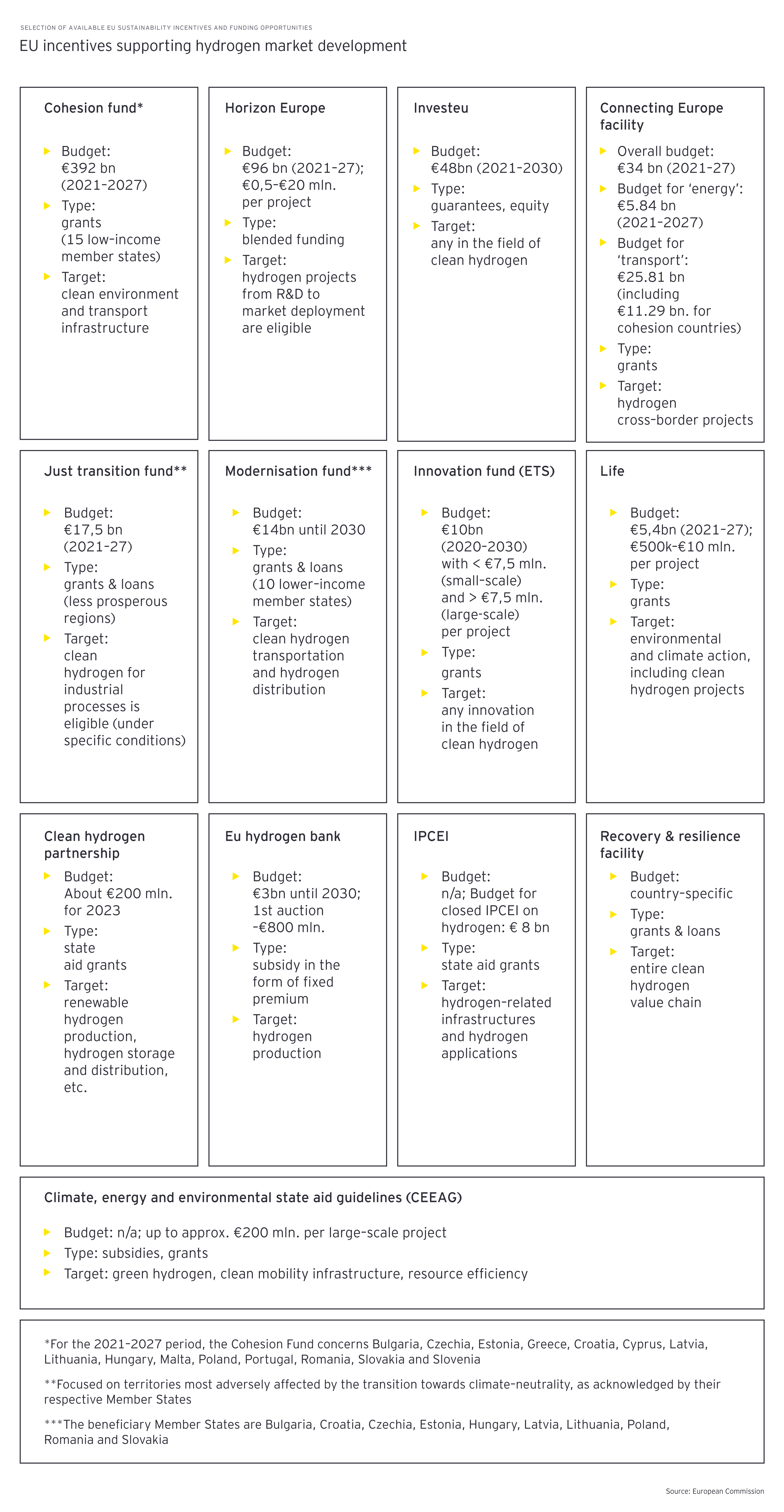
Chapter 1
The hydrogen market opportunity
Grasp the market opportunity for sustainable hydrogen.
The global hydrogen (H2) market was valued at USD 155.35 billion in 2022 and the H2 generation market industry is projected to grow at 9.3% (compound annual growth rate, CAGR) until 2030. Rapid industrialization and urbanization in e.g., India and China, the adoption of smart and energy-efficient H2-generation technologies, as well as ambitious net zero targets set by countries and companies, are major drivers for market expansion.1
H2 MARKET GENERATION GROWTH UNTIL 2030
9.3% CAGRThe hydrogen generation market industry is projected to grow at 9.3% (CAGR) until 2030.
Currently, the predominant sources for hydrogen production are natural gas and coal, leading to challenges in achieving decarbonization goals.2 However, hydrogen can be produced from various sources (details in the box below) and provides an ultimate opportunity for decarbonization. Despite the current expense associated with producing low-carbon or renewable hydrogen, the situation is poised to improve with the continuous decline in the cost of renewable electricity and advancements in relevant technologies such as electrolysers.3 Hydrogen’s role in various sectors, including transportation and industry, is expected to grow, driving a greener energy future.
These rapid advancements are opening up a range of opportunities for companies seeking to improve their current business models or develop completely new revenue streams. Oil and gas companies can future-proof their operations by scaling up carbon capture and utilization (CCUS) capacities for blue hydrogen production, the shipping industry could consider how large quantities of ammonia can be transported around the globe and utility companies have the potential to balance the grid while producing by using hydrogen as storage. Other high-emissions industries such as steel and aluminum can build on this development and move to carbon-free products with decarbonization implications further down the supply chain.
To accomplish zero emissions by 2050, governments are promoting the production of low-emissions hydrogen and stimulating its end-use. Some jurisdictions – such as the European Union (EU) – are already implementing concrete policies to support commercial scale projects for low-emission hydrogen production and infrastructure.

Chapter 2
Changing hydrogen regulatory landscape
Exploring emerging regulatory, tax and incentive trends in Europe
Renewable hydrogen market in Europe
Hydrogen generated from renewable sources, mainly wind and solar energy, is the most compatible option with the EU's long-term climate neutrality and zero pollution goals. The deployment of renewable hydrogen at a large scale should progress along with the rollout of renewable power generation until 2050 as technology matures and production costs decrease.
In Europe, the REPowerEU plan plays a crucial role in this vision, aiming to produce 10 million tons (mt) per year of green hydrogen within the EU by 2030, and an additional 10 mt imported from outside the EU.5 These 20mt would constitute around 15% of global demand. Achieving this goal necessitates the development of significant infrastructure, including 600 Gigawatt (GW) of new renewable power capacity and 200 GW of electrolyser capacity. According to the Hydrogen Council, Europe is home to over 30% of all proposed green hydrogen investments, with a total investment of nearly USD 76 billion.
EU regulations on renewable energy, and its impact on green hydrogen
When it comes to the regulation of hydrogen, Europe is currently leading the way. EU policymakers proactively develop new markets and address market imperfections to support niche technologies. Combining the carrot and the stick, the EU aims to facilitate a fast transition from fossil fuels to clean hydrogen. However, the EU’s comprehensive hydrogen strategy6 – accompanied by a set of related policies such as the Carbon Border Adjustment Mechanism (CBAM) and the Renewable Energies Directive II (RED II) – comes with a whole set of complications and compliance requirements.
The first challenge companies face when mapping their opportunities and risks in the hydrogen regulatory landscape is the definition of the various production standards for hydrogen. In 2022, the EU established a distinction between renewable and low-carbon hydrogen (see box below). Deciding which production process to use will have significant incentive and tax implications – and consequences for the design of the target operating and tax model. For instance, (virtual) Power-Purchase Agreements (PPAs) can be used to produce renewable hydrogen, which may open up decisions on which entity should conclude the (V)PPA and how to define corresponding intercompany recharges.
As the EU intensifies its efforts to adopt hydrogen as a clean energy solution, it has implemented several key policies, including promoting R&D, supporting large-scale deployment, fostering cross-border infrastructure development, and encouraging international cooperation. The central EU policies concerning renewable energy, including renewable hydrogen, are presented below for more information.
EU incentives supporting the development of the hydrogen market
EU countries have successfully implemented demand-side policies focused on the commercialization and diffusion of renewable technologies by overcoming market structural barriers and addressing market imperfections, including heavy CAPEX funding of green hydrogen and plans to roll-out OPEX subsidies such as long-term contracts and contracts for differences (CfD), which serve to mitigate market risks for projects.6, 15 On the user side, schemes are popping up to get payback on hydrogen trucks and filling stations across the EU. Those funding opportunities are therefore focused on various hydrogen investments, including hydrogen production facilities, refueling stations, smart grids, energy storage, carbon capture, and capacity building. A full range of incentive options is thus available depending on business strategy decisions. The table below displays some of the key EU initiatives that aim to accelerate the transition to a greener energy landscape and promote the widespread adoption of hydrogen technologies (please see details below).
The call for more funds is increasing due to the shortage of green hydrogen in Europe. With urgent climate targets to meet, political leaders at all levels are feeling pressured to offer incentives and get the market moving. While the EU is leading the way in terms of regulation, other regions are also expanding their regulatory efforts in the hydrogen space (details in box below).

Chapter 3
Operationalization of the clean hydrogen strategy
Aligning day-to-day operations with the clean hydrogen business model by assessing scenarios from a cost-benefit perspective
As companies assess the role of clean hydrogen in their future-proof business model, careful scenario planning considering the regulatory and tax landscape will be vital to understanding the type, location, and timeline of investment necessary to enable a clean hydrogen business model. A clear business case for change will need to include such scenario analyses and provide indications on the return on investment and potential benefits both on the top and bottom line. The financial support available and potential incremental costs should therefore be integrated in the hydrogen roadmap as early as possible.
Companies must envision and implement a target operating model that embraces clean hydrogen as a core component of their business. An organization’s target operating model takes into consideration various aspects of the business, including its governance and organizational structure; assets, IP and location; systems technology and infrastructure; business processes; transactional model and contracts; and corporate tax and legal entity structure. Below, we focus on three illustrative key operating model considerations relevant to the hydrogen transformation.

1. Locations, Assets and IP
The design of the future state operating model will likely change the way a company operates from a location and asset perspective.
- Embedding environmental, social, and governance (ESG) and establishing a future-proof business model may entail a change in value drivers and a shift in the role and significance of intangible assets. The hydrogen transformation can create new brand value, provide exemptions for – or limit the financial impact of – carbon taxes and increase companies’ ESG ratings. The functions supporting the creation of these new value drivers will further affect the transfer pricing remuneration setup, and decisions on the locations, functionality and reporting lines for such functionality.
- The generation of new intellectual property (IP) related to supporting a clean hydrogen economy will open up the possibilities for (tax) incentives and funding opportunities. Calls for public tenders generally relate to project development and may require ecosystem collaboration and incite a need for clear IP ownership delineation. The variety in financial support available among jurisdictions will significantly impact decisions on location for the creation and ownership of new IP which will in turn again pose implications for the transfer pricing setup.
- Particularly for the clean hydrogen journey, significant investments may be required to develop hydrogen production technologies and to integrate hydrogen production, storage, and transportation into existing infrastructure and supply chains. Companies will need to decide in which market they want to operate given the incentives and regulatory obligations. Additionally, due to the infrastructure required, proximity to customers and suppliers or a viable existing infrastructure network may weigh significantly in the decision-making process. Besides analyzing incentives and CAPEX criteria, companies should invest in tailored location services to integrate strategic and financial analysis of operating costs and requirements, business landscape criteria, and local and regional taxes.
Any creation of new IP should be aligned with the existing operating and tax model. Many companies operate under a centralized operating model that assumes IP is controlled and owned by the respective centralized entity. Any incentive application should therefore also be closely monitored and aligned with the tax and operating model. Also, the introduction of OECD’s 15% minimum corporate income taxation rules should be assessed as depending on the nature of the incentives the foregoing tax revenue could be effectively recaptured by another country, meaning that the envisaged financial benefit of the respective incentive could be (partially) neutralized from an overall group perspective.
2. Transactional model and contracts
The integration of hydrogen in the existing supply chain network impacts the transaction flows and has various key considerations.
- International trade and indirect tax flows need to be considered in light of the envisaged incoterms, the need for VAT registrations, deductibility of input VAT, importing and export requirements, amongst others.
- The transport of hydrogen can vary according to form (e.g., hydrogen or a vector like ammonia) and mode (e.g., pipeline, ship or truck). As maritime transport will be part of the EU Emission Trading System (ETS) and road transport will be part of a separate ETS system, these logistical choices will also have carbon tax and financial consequences.
- The EU is set to impede the expansion of carbon-intensive hydrogen by integrating hydrogen into the EU ETS, subjecting any residual emissions from hydrogen production to the carbon pricing of the internal market. Notably, CBAM extends this requirement to imported hydrogen (e.g., from the Middle East or Australia), therefore, diminishing the appeal of non-renewable hydrogen. The impact and reporting obligations as a consequence of the introduction of CBAM should be monitored and accounted for. However, it is crucial to recognize that only hydrogen and ammonia are included, while other hydrogen derivatives such as methanol and liquid organic hydrogen carriers (LOHC) are (for now) excluded. This poses important considerations for the decision on how to store and transport hydrogen.
All these elements should be considered when designing the future transactional flows and the contracting for transport in order to mitigate financial impacts and sustainability tax exposure.
3. Legal entity structure
The expansions in the hydrogen business will result in significant investments, whereby organic and inorganic growth outside the core domestic markets will require a careful upfront design of the legal-organizational structure.
- Location factors are vital for this upfront design, driven by key tax implications such as the ability to mitigate leakage on intercompany flows (e.g., dividends, royalties, interest) and to impair and create a tax-deductible expense for high-risk investments.
- Other considerations such as the legal requirements to reduce overall group emissions need to be embedded in the location selection procedure. An example in this regard is various court cases that force companies to be more ambitious with their ESG strategy.
- Depending on the long-term strategy of a company, such as investment with the aim to kick-start the decarbonization of a specific industry (e.g., shipping) and the ambition to carve-out the investment in the short-medium term, may necessitate the legal organizational structure be fit-for-purpose in light of potential future taxation on amongst others capital gains.
Obviously, other considerations with regard to the legal entity structure and other dimensions of the operating model need to be considered as well.
Related article
Summary
The rapidly evolving regulatory, tax and incentive environment surrounding hydrogen production and utilization demands astute navigation by companies seeking to adapt and thrive in a decarbonized world. By staying informed on available incentives, responsive to regulatory shifts, and by aligning their operating and tax models accordingly, companies can effectively transition their businesses and seize the opportunities presented by the hydrogen revolution.
Acknowledgement:
We kindly thank Ingo Bunzeck, Leonie Smit, Jeronimo von Ah and Turkan Karim-Zada for their valuable contribution to this article.



